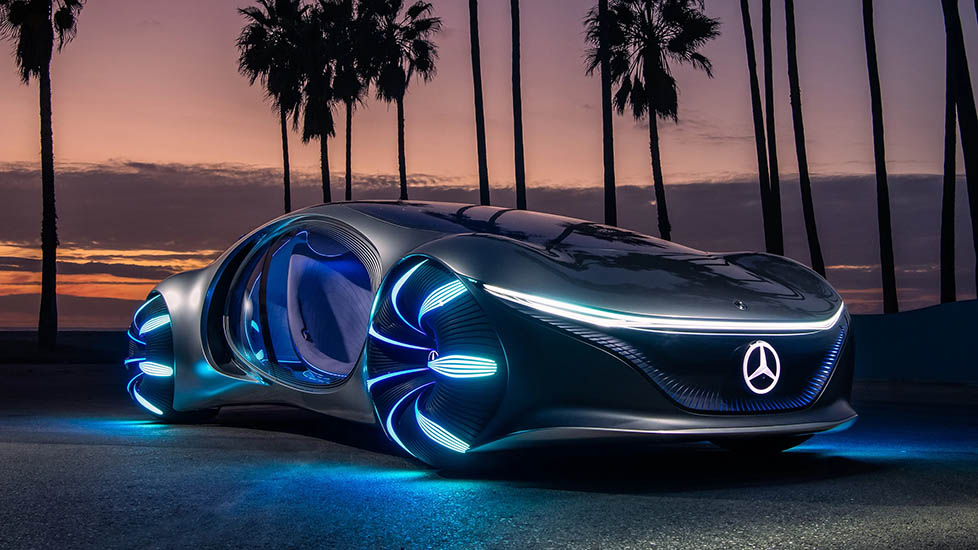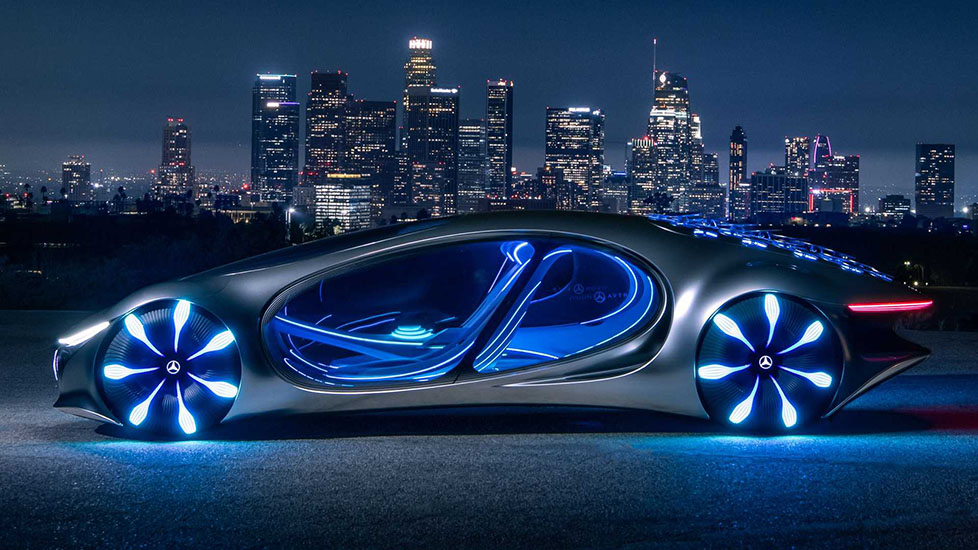Mercedes-Benz Vision AVTR is a futuristic electric concept car that is inspired by the movie Avatar directed by James Cameron. The car was first introduced in January 2020 at the Consumer Electronics Show (CES) in Las Vegas. The name AVTR stands for Advanced Vehicle Transformation, and it reflects the close collaboration between Mercedes-Benz and the Avatar team in developing the car.
The car features a radical new “one-bow” design that fuses the exterior and interior into one entity, a biometric interface that connects the driver and the car, and bionic flaps that mimic the movements of the creatures in Avatar. The car also has a high-performance battery that is made from organic materials and can be recycled completely. The Mercedes-Benz Vision AVTR is a vision of future mobility that combines innovation, sustainability, and emotion.
Mercedes-Benz Vision AVTR specifications:
- It has a 110-kWh battery that can be fully charged in less than 15 minutes.
- It produces 470 horsepower (350 kilowatts) and has a driving range of up to 435 miles (700 kilometers).
- It has four electric motors that can move the car sideways up to 30 degrees in a “crab movement” for maximum mobility.
Features of Mercedes-Benz Vision AVTR are:

- It has a one-bow design that integrates the exterior and interior into one seamless unit.
- It has a biometric interface that connects the driver and the car through touch, vision, and brain-computer interaction.
- It has organic battery technology that is made from recyclable materials and does not use rare earths or metals.
- It has bionic flaps on the rear that can move like the wings of a dragonfly and create aerodynamic effects.
- It has organic light-emitting diodes on the front and rear that can change colors and patterns to communicate with the environment.
Mercedes-Benz Vision AVTR price
The Mercedes-Benz Vision AVTR is a concept car that is not yet available for sale. However, some sources have speculated that the price of the car in the USA would start from $76,000 or around $72,000 to $74,000.
Mercedes-Benz Vision AVTR driving experience

Driving the car is not easy or comfortable. The car has no steering wheel, pedals, or buttons. The driver has to use their hand movements and gestures to steer, accelerate, brake, and change direction. The car can also move sideways like a crab, which can be disorienting and nauseating. The car requires a lot of concentration and coordination from the driver, and may not be suitable for conventional roads or traffic.
Therefore, the Mercedes-Benz Vision AVTR can be seen as a dream car or a nightmare to drive, depending on your perspective and preference. It is a car that challenges the norms and expectations of mobility and sustainability, but also poses many difficulties and limitations for practical use.
Pros and Cons

Pros:
- It has a unique and futuristic design that is inspired by the movie Avatar and the natural world.
- It has a biometric interface that connects the driver and the car through touch, vision, and brain-computer interaction.
- It has organic battery technology that is made from recyclable materials and does not use rare earths or metals.
- It has bionic flaps on the rear that can move like the wings of a dragonfly and create aerodynamic effects.
- It has organic light-emitting diodes on the front and rear that can change colors and patterns to communicate with the environment.
Cons:
- It is not yet available for sale and may not be feasible for mass production.
- It is very difficult to drive and requires a lot of concentration and coordination from the driver.
- It is not very practical for everyday use and may not fit in conventional roads or parking spaces.
- It is very expensive and may not be affordable for most people.
Conclusion:

The Mercedes-Benz Vision AVTR is a concept car that is a vision of the future of mobility and sustainability. It is a car that is inspired by nature and connects with humans and the environment. It is a car that is innovative and creative, but also challenging and impractical. It is a car that is not yet ready for the real world, but may inspire us to imagine new possibilities.




